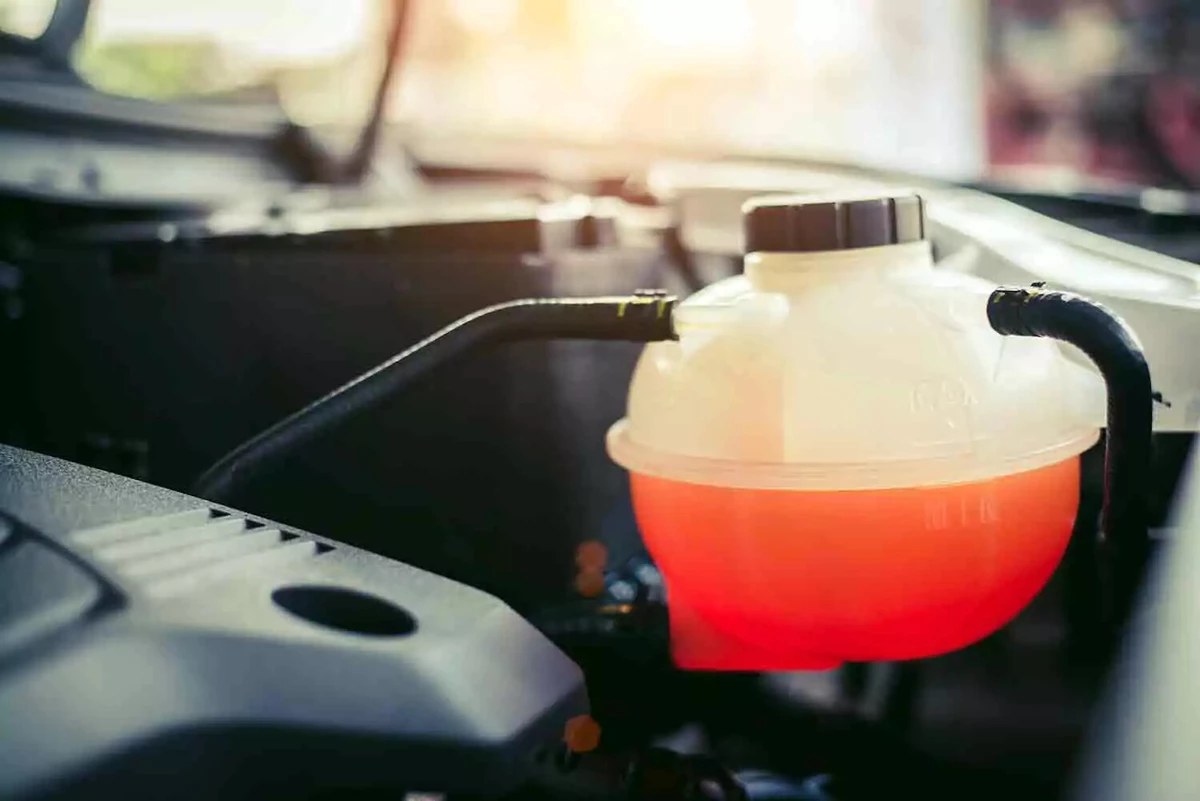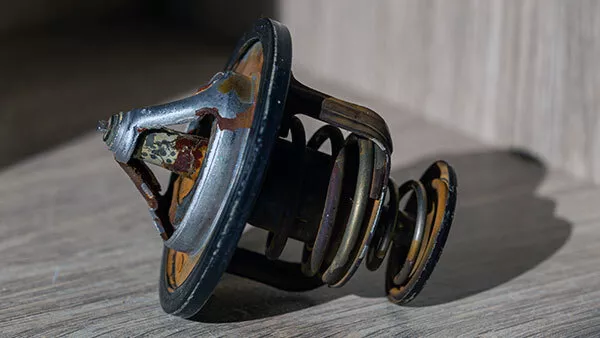To keep your engine running at its best, keep up with regular maintenance tasks, including flushing your engine coolant. Flushing the coolant removes antifreeze contaminated by rust or debris. That’s replaced by fresh fluid that ensures your engine runs at the right temperature and is protected from damage.
This guide covers the basics of engine coolant and describes signs that it’s time for a flush. We also provide estimated costs.
What Is Coolant?

Coolant comes in various colors. This makes it easier to identify for vehicle-specific applications. Avoid mixing colors.
Engine coolant is a specially formulated liquid that regulates motor temperature. It keeps the engine from overheating when it’s very hot and freezing when it’s cold. Coolant is a mixture of propylene glycol or ethylene glycol and water. The formula raises the boiling point and lowers the freezing point.
Coolant also prevents corrosion by lubricating cooling system components like the water pump.
What’s the difference between coolant and antifreeze?
In the automotive world, the terms antifreeze and coolant are used interchangeably. However, they are different fluids. Antifreeze, which is concentrated, is made from propylene or ethylene glycol. On its own, it shouldn’t be used in the cooling system. However, when it is mixed with water (usually 50/50), it becomes coolant. This liquid circulates through the engine to regulate temperature and lubricate valuable components. You can buy antifreeze and dilute it to create coolant or buy pre-mixed coolant.
How long does engine coolant last?
Most engine coolants last between two and five years or 30,000 and 60,000 miles. Newer vehicles can use extended-life blends that go 10 years or 100,000 miles. Regular checks of the coolant level and condition help you determine when it’s time for a flush. As usual, follow the manufacturer’s recommendations. If you drive in extreme climates, consider flushing your coolant more frequently.
Signs It’s Time for a Coolant Flush

When a car overheats, the cause must be addressed immediately. A coolant flush is likely to be part of that process.
Again, follow the manufacturer’s recommendations for how often to flush your coolant. That’s the baseline. But if you discover these symptoms, it’s time for a flush.
Overheating: If your engine overheats, your coolant may be contaminated and not regulate temperature properly.
Heater doesn’t work: If you can’t get hot air out of the car’s heater, it’s an indication that the coolant has degraded and is no longer circulating correctly.
Discolored/rusty coolant: When the coolant becomes brown and rusty looking, it’s time for a flush.
Maintenance reminder light: Some vehicles come equipped with a dashboard light that lets you know when it’s time for scheduled maintenance.
Some of these conditions also occur when a cooling system component is failing. If you encounter any of these problems, we recommend performing a complete inspection to determine the cause.
What happens if you don’t flush the coolant?
After the coolant becomes contaminated, it can no longer keep the engine cool. As a result, the motor will overheat. Eventually, internal engine damage may occur—and you may face expensive repairs, such as a damaged cylinder head or a blown head gasket.
Is It Hard to Flush Coolant?

An appropriately-sized drain pan is essential when flushing engine coolant.
If you are familiar with car maintenance, a coolant flush is no big deal. In most cases, it takes less than an hour and requires only basic automotive tools. You’ll want a floor jack, drain pan, wrench or pliers, funnel, and distilled water. See our detailed guide and video with step-by-step instructions for changing engine coolant.
A DIY coolant flush requires a minimal cost, typically just for the antifreeze and water solution. On average, you can purchase a gallon of coolant from eBay for between $10 and $30. That’s a bargain compared to the cost of having a mechanic perform the flush—about $100 to $150.
Related Tasks and Issues

That puddle of blue engine coolant is a sign of a leak.
When flushing the coolant, stick to the recommended maintenance tasks. That’s the key. However, a cooling system inspection is also a good idea.
Start by checking the system for signs of leaks. If you smell something sweet or see puddles of liquid below the car, one of the hoses or cooling system components might be leaking. Fix that problem before refilling the system.
If possible, hose down the radiator to keep it free from debris and inspect it for cracks or other signs of wear. If the radiator cap is damaged or worn, replace it to ensure the proper pressure is held in the system.
It’s also a good time to check the water pump, which circulates coolant through the system. If it’s leaking, replace it. Finally, if the engine continues overheating even with fresh coolant, there may be a problem with the thermostat or heater core.
Share your feedback
This article is meant to provide general guidance only. Automotive maintenance, repair, upgrade, and installation may depend on vehicle-specifics such as make and model. Always consult your owner's manual, repair guide for specific information for your particular vehicle and consider a licensed auto-care professional's help as well, particularly for advance repairs.

















